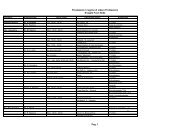Working Paper of Public Health Volume 2012 - Azienda Ospedaliera ...
Working Paper of Public Health Volume 2012 - Azienda Ospedaliera ...
Working Paper of Public Health Volume 2012 - Azienda Ospedaliera ...
Create successful ePaper yourself
Turn your PDF publications into a flip-book with our unique Google optimized e-Paper software.
<strong>Azienda</strong> <strong>Ospedaliera</strong> Nazionale“SS. Antonio e Biagio e Cesare Arrigo”<strong>Working</strong> <strong>Paper</strong> <strong>of</strong> <strong>Public</strong> <strong>Health</strong>nr. 16/<strong>2012</strong>management system, workers in the lowest positions are indicated by the letter A (i.e.commesso), followed by the B level (i.e. coadiutore amministrativo), whereas the middlelevels are indicated respectively by the letters C and D (i.e. assitente amministrativo andcollaboratore amministrativo). 5 Finally, the person in charge <strong>of</strong> each hospital’s operatingstructure is an administrative employee <strong>of</strong> D level who is given specific responsibilities.Obviously, the wage for each level depends on the corresponding hierarchical position.A potential explanation <strong>of</strong> hospital’s inefficiency can be ascribed to this hierarchical pyramidrather than to the total number <strong>of</strong> employees. Figure 1 is the graphic interpretation <strong>of</strong> thisthesis, taking hierarchical pyramids <strong>of</strong> efficient and inefficient hospitals into consideration. 6Figure 1: Italian administrative hierarchical pyramid: Efficient vs. inefficient hospitalsLevel APeople in charge0.50.40.30.20.10Level DEfficient hospitalsInefficient hospitalsLevel BLevel CIndeed, if there is no significant relation between hospitals’ inefficiency and the number <strong>of</strong>administrative employees, their distribution in this pyramid might be the real cause <strong>of</strong> badperformance. In other words, there could be a relation between hospitals’ inefficiency and anexcessive number <strong>of</strong> employees in the highest levels (i.e. too many individuals in chargeand/or too many D-level workers). We can observe this situation in Figure 1. In efficienthospitals (i.e. the sub-sample <strong>of</strong> observations with score equal to 0) there are relatively moreemployees in the lower levels (B and C) than in the higher ones (i.e. people in charge and D);whereas inefficient hospitals (i.e. the sub-sample <strong>of</strong> observations with a score higher or equalto 1) display a bigger relative number <strong>of</strong> employees in the higher levels (i.e. people in charge5 Italy’s public administrative structure within the <strong>Health</strong> Care System can be better understood by looking at the currentnational work contract, i.e. “Contratto Colletivo Nazionale di Lavoro del personale del comparto del servizio sanitarionazionale quadriennio normativo 2006-2009 e biennio economico 2006-2007”. Notice that the same hierarchical structure isapplied by all Italian hospitals since the cited national work contract is the common legal frame-work for the whole country.What can change is the allocation <strong>of</strong> employees in each level, according to the specific center’s organization.6 Efficient hospitals are observations with a score equal to zero, whereas inefficient ones are observations with a score equalor higher than one. The values showed in the figure are the mean <strong>of</strong> these two sub-samples <strong>of</strong> observations.11



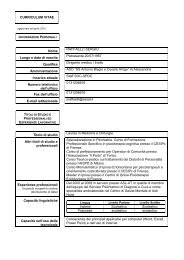
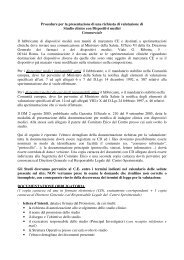

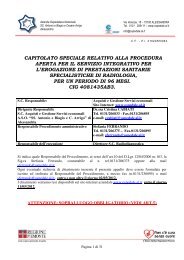
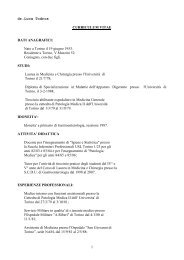
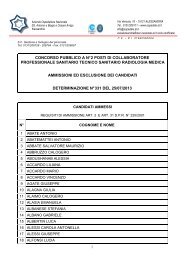

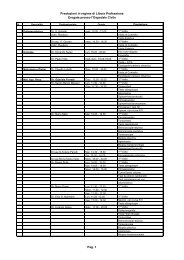


![[torino - 1] lastampa/urc/01 ... 26/10/09 - Azienda ...](https://img.yumpu.com/44058002/1/190x32/torino-1-lastampa-urc-01-26-10-09-azienda-.jpg?quality=85)


